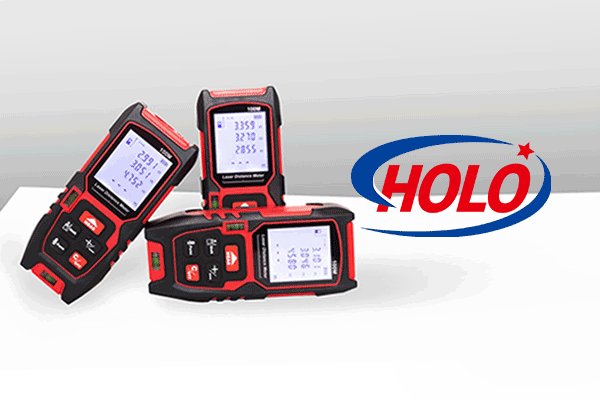As a factory with over 15 years of experience in designing and manufacturing laser distance measuring tool, HOLO supplies laser distance measuring tool with a measurement range from 30mm to 120mm. It offers both red-light rangefinders suitable for interior decoration and green-light rangefinders for outdoor measurement.
The laser distance measuring tools produced by HOLO fully leverage the multiple advantages of laser light sources:
1. High brightness of lasers. The brightness of solid-state lasers can be as high as 10¹¹W/cm²Sr. This is because although the power of lasers is limited, their extremely small beam results in an extremely high power density. Therefore, the brightness of lasers is generally higher than all the light we can see (including the strongest in visible light: sunlight), which is also the fundamental reason why lasers can be used for interstellar measurement.
2. Good monochromaticity of lasers. This is because lasers are composed of a single spectral frequency.
3. Good directionality of lasers. Lasers have an extremely small beam divergence angle and can still maintain straight-line transmission after long-distance travel.
4. Good coherence of lasers. The visible light we usually see is incoherent light, while lasers can accomplish things that they cannot, such as cutting steel.
The mainstream laser distance measuring tools in today’s market are phase-based laser rangefinders. This is because phase-based laser rangefinders can easily overcome a major drawback of ultrasonic ranging: excessive error, achieving measurement accuracy at the millimeter level. However, the main disadvantages of laser distance meter based on this method are complex circuits and shorter operating distances (around 100 meters; through the efforts of many scientists and researchers, there are now phase-based laser rangefinders with operating distances of several hundred meters).
Phase-based laser ranging technology uses laser with radio band frequencies, performs amplitude modulation, and measures the phase difference generated by the round-trip distance of sinusoidally modulated light between the rangefinder and the target. Based on the wavelength and frequency of the modulated light, it converts to the laser flight time and then calculates the distance to be measured. This method generally requires placing a reflector at the target to reflect the laser back along the original path to the laser rangefinder, which is then received and processed by the wave detector of the receiving module. In other words, this is a passive laser ranging technology that requires a cooperative target. By modulating the amplitude of the transmitted signal with a sinusoidal signal and detecting the phase shift φ between the echo signal reflected from the target and the transmitted signal, the distance to be measured can be obtained through calculation.

